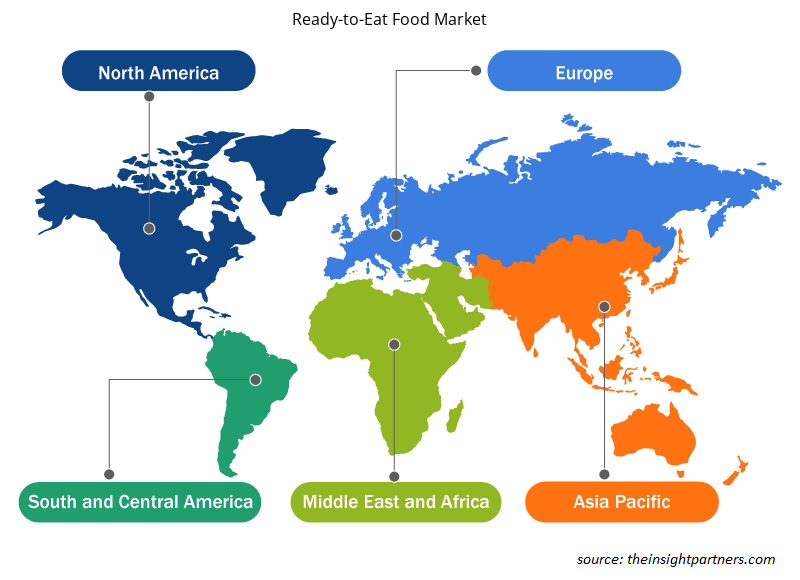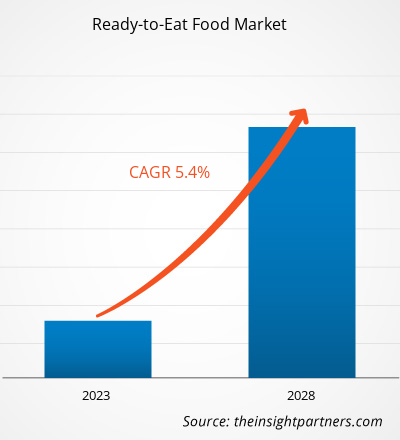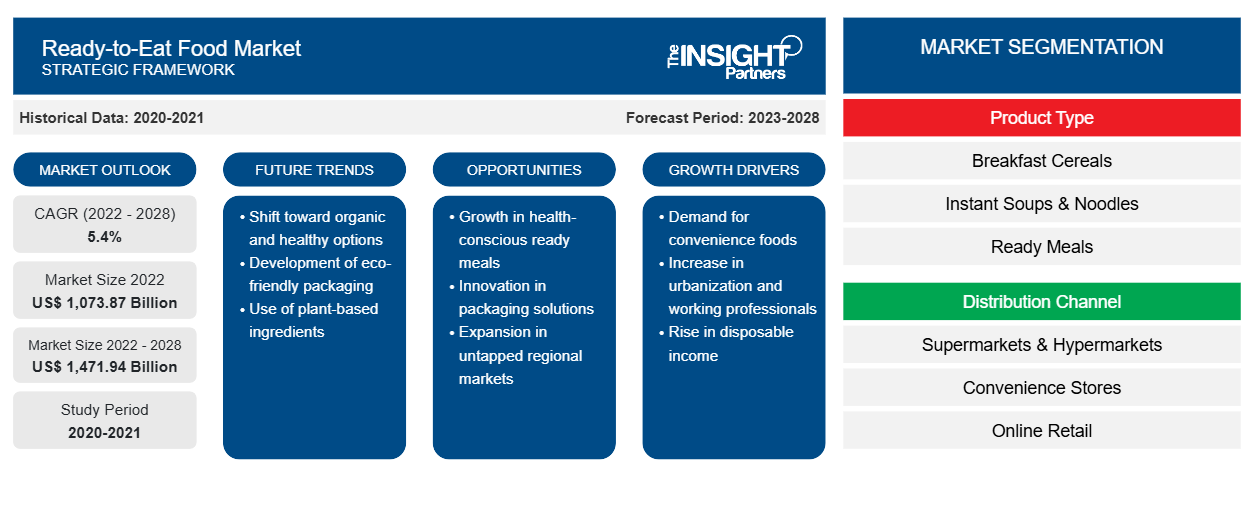[研究报告] 即食食品市场预计将从 2022 年的 10,738.7 亿美元增至 2028 年的 14,719.4 亿美元。预计 2022 年至 2028 年的复合年增长率为 5.4%。
即食食品包括各种加工和包装食品,无需进一步准备即可食用。原料经过清洗、烹饪、加工并装入容器中,供直接食用。一些常见的即食食品包括速溶汤、烘焙食品、甜点和即食食品。这些产品富含各种提取物、酸、调味剂、甜味剂、抗氧化剂和防腐剂。它们为消费者提供了极大的便利,同时有助于减少饭菜准备时间,延长产品的保质期,提高成本效益,并最大限度地减少腐败。
2020 年,亚太地区占据了即食食品市场的最大份额,而中东和非洲等其他发展中地区预计在预测期内也将大幅增长。由于发展中国家劳动人口的增加和人们忙碌的生活方式,即食食品市场的主要参与者正在亚太地区扩大业务。越来越多的人选择在旅途中或外出时食用食物。
此外,大量研究已经证实,跨国食品和饮料公司 (TFBC) 已经改变了食品体系和总体消费,改变了加工食品的供应量、需求量、价格以及最终的消费量。即食食品市场的增长在中等收入国家尤为显著。
定制此报告以满足您的需求
您可以免费定制任何报告,包括本报告的部分内容、国家级分析、Excel 数据包,以及为初创企业和大学提供优惠和折扣
-
获取此报告的关键市场趋势。这个免费样品将包括数据分析,从市场趋势到估计和预测。
新冠疫情对即食食品市场的影响
2020 年初,COVID-19 疫情给许多行业带来了前所未有的挑战。各国政府按照世界卫生组织和各国卫生部的指导方针实施的封锁、边境限制、旅行禁令、生产停工和其他安全措施阻碍了制造业的运营。另一方面,COVID-19 疫情对即食食品市场产生了积极影响,因为消费者和零售商正在囤积保质期较长的方便食品。此外,寻求更健康的包装食品和饮料产品来增强免疫力的消费者也对 COVID-19 的影响感到担忧。随后,即食产品制造商专注于富含蛋白质和其他营养价值的健康营养产品,这刺激了疫情期间对即食食品的需求。
市场洞察
千禧一代对方便食品的强烈偏好推动了市场增长
高品质的方便食品消费量正在增长,这是目前食品行业最大的趋势之一。方便食品,如即食产品,可以让消费者节省与备餐、烹饪、消费和餐后活动相关的时间和精力。据说,这一食品领域的发展源泉包括一系列社会变化,最显著的是小家庭数量的增加和全球千禧一代人口的增加。由于千禧一代的工作日程繁忙,他们更喜欢高效利用时间,而不是浪费在繁琐的任务上。他们更有可能把钱花在方便上。因此,他们越来越喜欢即食产品,如烘焙产品、零食和乳制品,进一步推动了即食食品市场的发展。
产品类型洞察
根据产品类型,即食食品市场分为早餐谷物、速食汤和面条、即食食品、零食、烘焙食品和糖果等。其他即食食品类别预计在预测期内占据最大份额。其他类型包括乳制品、甜点、酱料、酱汁和蘸料。即食乳制品包括冰淇淋、酸奶、包装调味奶和奶酪。注重健康的消费者大多消费乳制品,因为普通乳制品可以改善骨骼和肠道健康,降低心血管疾病 (CVD) 和 2 型糖尿病的风险。随着人们从传统生活方式转向现代生活方式,加工和包装酱料和蘸料的受欢迎程度不断提高,推动了即食食品市场的增长。
即食食品市场区域洞察
Insight Partners 的分析师已详细解释了预测期内影响即食食品市场的区域趋势和因素。本节还讨论了北美、欧洲、亚太地区、中东和非洲以及南美和中美洲的即食食品市场细分和地理位置。

- 获取即食食品市场的区域特定数据
即食食品市场报告范围
| 报告属性 | 细节 |
|---|---|
| 2022 年市场规模 | 10,738.7亿美元 |
| 2028 年市场规模 | 14,719.4亿美元 |
| 全球复合年增长率(2022 - 2028) | 5.4% |
| 史料 | 2020-2021 |
| 预测期 | 2023-2028 |
| 涵盖的领域 |
按产品类型
|
| 覆盖地区和国家 |
北美
|
| 市场领导者和主要公司简介 |
|
即食食品市场参与者密度:了解其对商业动态的影响
即食食品市场正在快速增长,其驱动力是终端用户需求的增加,而这些需求又源于消费者偏好的不断变化、技术进步以及对产品优势的认识不断提高等因素。随着需求的增加,企业正在扩大其产品范围,进行创新以满足消费者的需求,并利用新兴趋势,从而进一步推动市场增长。
市场参与者密度是指在特定市场或行业内运营的企业或公司的分布情况。它表明在给定市场空间中,相对于其规模或总市场价值,有多少竞争对手(市场参与者)存在。
在即食食品市场运营的主要公司有:
- 雀巢公司
- 康尼格拉品牌公司
- 卡夫亨氏公司
- 通用磨坊公司
- 金宝汤公司
免责声明:上面列出的公司没有按照任何特定顺序排列。

- 获取即食食品市场顶级关键参与者概述
分销渠道洞察
根据分销渠道,即食食品市场细分为超市和大卖场、便利店、在线零售和其他。在预测期内,在线零售领域预计将在即食食品市场中实现最高的复合年增长率。在线零售为用户提供便捷的购物体验,其次是简化的产品交付。在线零售店以大幅折扣提供各种产品;此外,消费者可以方便地远程购买所需的产品。
即食食品市场的主要参与者包括雀巢公司、康尼格拉品牌公司、卡夫亨氏公司、通用磨坊公司、金宝汤公司、MTR 食品私人有限公司、荷美尔食品公司、泰森食品公司、JBS SA 和家乐氏公司。这些参与者致力于开发降低健康风险的产品,以满足新兴的消费趋势并遵守监管框架。他们参与并购、业务扩张和合作,以扩大市场份额。
报告亮点
- 即食食品市场的渐进式行业趋势,帮助参与者制定有效的长期战略
- 采取业务增长战略以确保发达市场和发展中市场的增长
- 2019 年至 2028 年即食食品市场定量分析
- 全球即食食品需求量估计
- 波特五力分析说明了行业内买家和供应商的效力
- 了解竞争市场状况的最新发展
- 市场趋势和前景,以及影响即食食品市场增长的因素
- 通过强调支撑商业利益的市场策略来协助决策过程,从而促进市场增长
- 各节点即食食品市场规模
- 市场和 RTE 产品行业动态的详细概述和细分
- 各地区增长规模及增长机遇
- 历史分析(2 年)、基准年、预测(7 年)及复合年增长率
- PEST和SWOT分析
- 市场规模、价值/数量 - 全球、区域、国家
- 行业和竞争格局
- Excel 数据集
近期报告
相关报告
客户评价
购买理由
- 明智的决策
- 了解市场动态
- 竞争分析
- 客户洞察
- 市场预测
- 风险规避
- 战略规划
- 投资论证
- 识别新兴市场
- 优化营销策略
- 提升运营效率
- 顺应监管趋势























 获取免费样品 - 即食食品市场
获取免费样品 - 即食食品市场